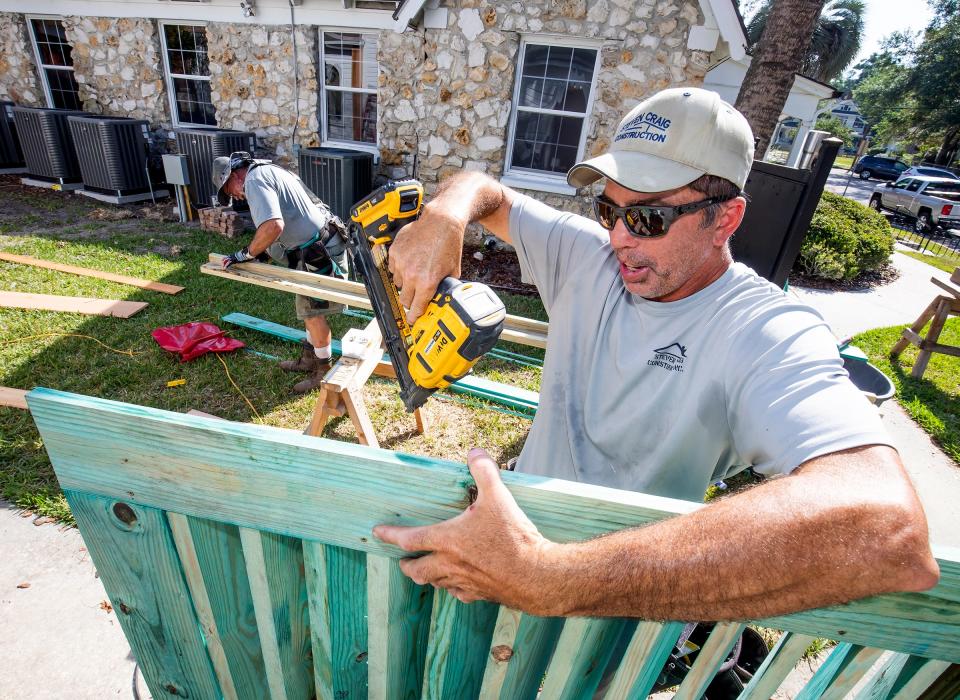View: In this real estate climate, many homeowners can’t afford to move. What to do?
Homeowners who bought homes just after the Great Recession in 2008, through 2019, are in a very difficult situation regarding their homes if they need or want to move.
Immediately following the crash of the housing market in 2007-2008, millions of homes across America were sold through foreclosure and bank short-sale arrangements with low interest rates.
There were also millions of Americans who were offered housing assistance programs by the government to help them retain their homes with extended terms and very low interest rates. During those times, a lot of special deals were cut to move the housing inventory.
Help wanted: Over 600 Lake County construction students need industry support
More Around the House: Stone wool insulation offers home solutions
Eustis seafood restaurant: Backfin opens to add fish, crab, shrimp offerings in Lake County
Fast forward to the start of the pandemic and over the last two years: The housing market has changed dramatically in that overall housing inventories dropped to a level after years of underbuilding in which demand outstripped supply.
Plus, the aging of the Millennial generation has pushed even more buyers into the market along with the pandemic, which reminded everyone how important owning a home was during times of peril.

Prices have soared and interest rates just this year are up from 3 percent to the 6 percent levels. This has created a situation where many homeowners simply cannot afford to move; they are house locked.
Some homeowners face a double-edged sword
With home pricing at new record highs for most markets, a homeowner who purchased their home during the Great Recession has a true double-edged sword to contend with in that they can make a lot of money on the existing home, but a new dream home will cost significantly more, and it probably will be less of a home.
Don’t forget, in the depth of the Great Recession, luxury homes were being sold for starter home pricing and, worse yet, appraisals during that time gave no increases for things like granite and specialty millwork. There were a lot of beautiful homes sold way below actual building costs.
With record inflation in building material and labor costs, the idea of building a new home that is better than your current home is practically impossible. Starter home new construction costs are well above $200 a square foot, and that does not account for increases in impact fees and building permit costs. Most homeowners would spend at least 40 to 50 percent more to build the current home they now live in.
The fed is addressing inflation
The Federal Reserve has adopted a hawkish view on inflation, and it has committed to bring the inflation rate down from 9 percent to 2 percent. Housing is going to be hit the hardest with interest rates rising from the 3 to 6 percent level.
Read Chair Powell's full opening statement from the #FOMC press conference (PDF): https://t.co/ZNA1xGtjax pic.twitter.com/d9UjN8rAh7
— Federal Reserve (@federalreserve) September 21, 2022
What this means is that not only does the homeowner buy a lesser house for a lot less money, but their payments will soar, since many homes bought during the Great Recession period had interest rates sometimes as low as 2.25 percent.
If the housing and building costs even remained the same many homeowners would be house locked and unable to upgrade due to the interest rates.
In residential real estate, good inventories remain low
Finally, good inventories remain very low. Once again, many of the homes that were bought after the Great Recession were real bargains, and right now, there are few bargains on the market.
Sure, the current housing slowdown will knock some of the froth off the housing market, but no one predicts any type of crash like the mid-2000s.
Florida New Home Construction Report – August 2022 #buildingpermitreport https://t.co/9iTrUDJXhd pic.twitter.com/BHQmJXZfzq
— HBW Inc (@HBWNews) September 21, 2022
Plus, with supply disruptions and uncertainty in the housing markets, builders will be slower to build homes for speculation, which will exacerbate the current housing inventory crunch.
This inability to sell a home will require families to stay put and this will discourage workers from seeking new opportunities in other locations unless their company offers lucrative housing relocation assistance. While the housing market may ease some, at this time, the problem of homeowners being locked into their homes seems like a long-term problem with few answers.
The only silver lining for these locked in homeowners is that unlike millions of other people who want a home, they’ve got one. The best advice is to remodel and enhance your current home and plan on staying put for a while unless you are a senior who is willing to downsize into a smaller home with fewer amenities.
Don Magruder is the CEO of Ro-Mac Lumber & Supply, Inc., and he is also the host of the “Around the House” Show which can be seen at AroundtheHouse.TV.
This article originally appeared on Daily Commercial: View: Florida homeowners face a dilemma in this real estate climate

